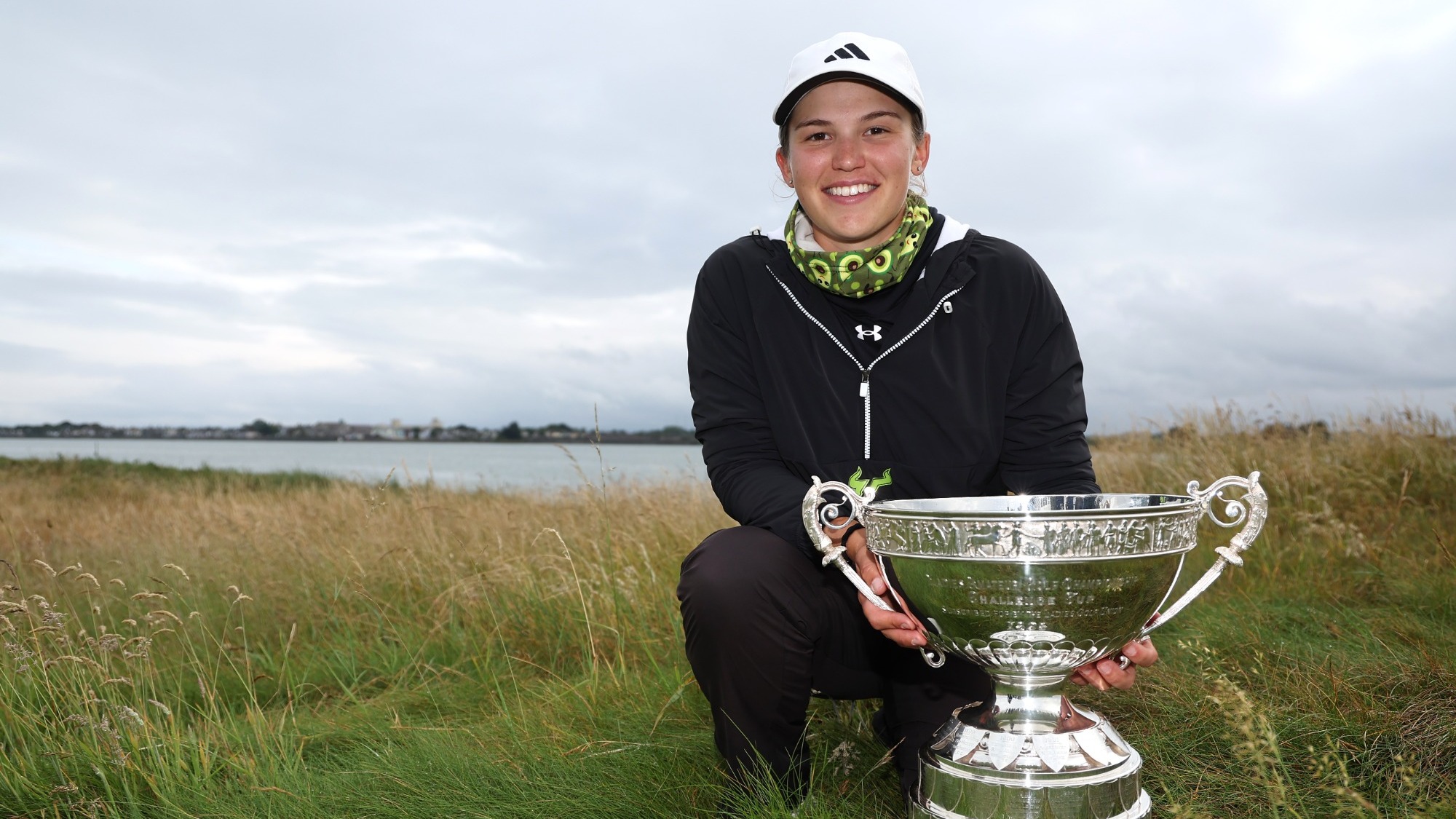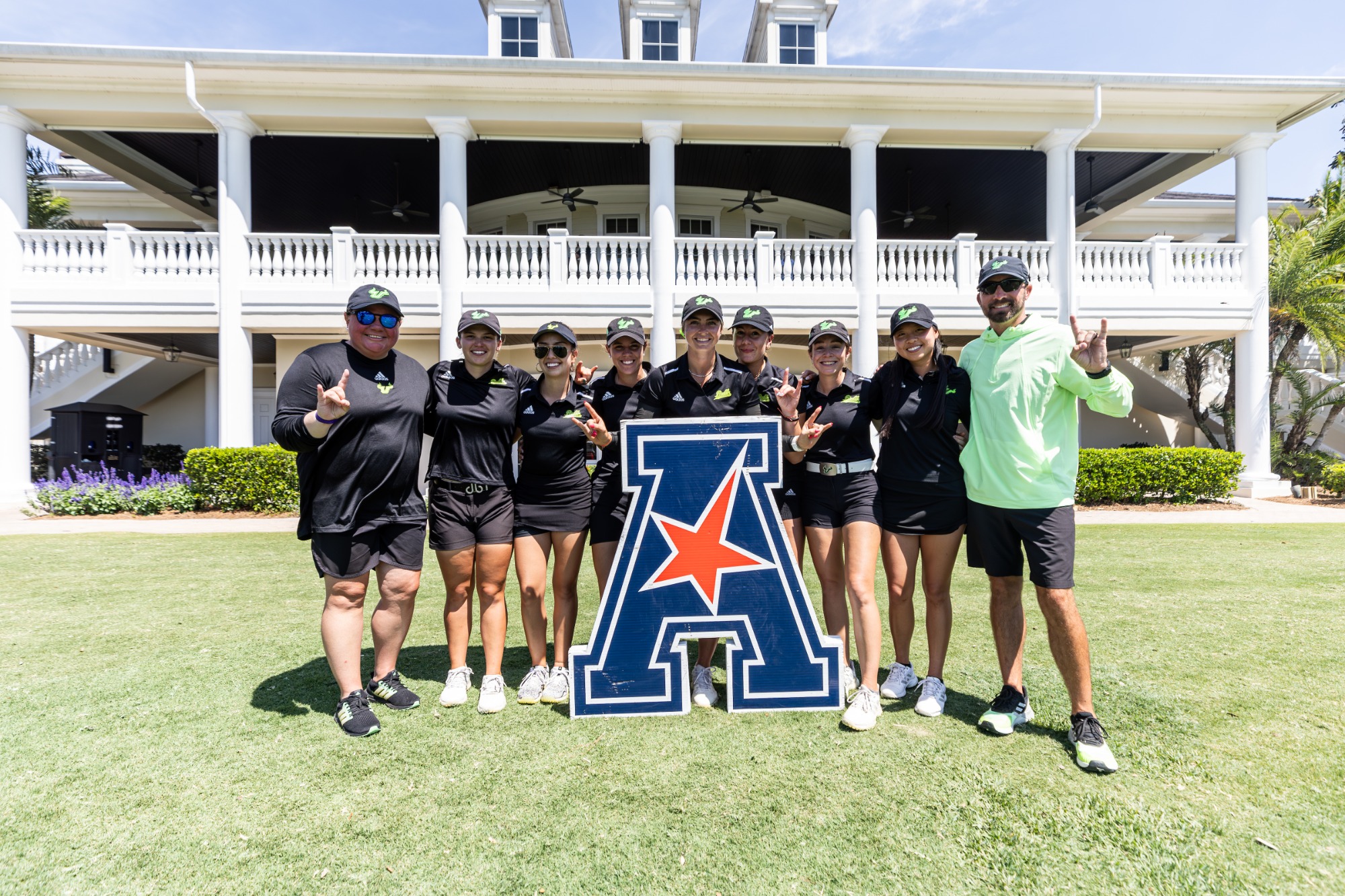Case Study

Straight out of the University of South Florida, Melanie Green stormed the Epson Tour—earning two wins, Rookie and Player of the Year honors. Now she’s taking her faith-and-feedback formula to the LPGA.
Medina in Orleans County, New York is a village of roughly 6,000 inhabitants. Better known for its canal than its golf courses, it was here that a 13-year-old learned to hit shots on the firm, fast turf of Shelridge Country Club, where fescue framed the fairways and imagination is worth a couple of shots a round. That teenager was Melanie Green.
A decade later, Green stands atop the Epson Tour season-long points list, carrying Rookie of the Year and Player of the Year honors. Her LPGA Tour card has been earned the hard way: through patience, prayer, and the kind of process that turns good into great.
“I just kind of had my own little game plan,” Green says of a season in which she won twice and stacked top-10 finishes. “I was just going through the process,” she says. “If you’re focused too much on the expectation, there’s so much more room for failure. If you don’t focus so much on the goals, you allow yourself to actually surpass what you want to do because it allows you to play more freely.”

That philosophy is the thread through everything Green does—how she achieved collegiate success with a mid-major rather than a Power Five behemoth, how she learned to love links golf on her first competitive trip outside the United States, and how she weathered the awkward early weeks of professional life.
Green’s rise didn’t trace the typical blue-chip path. By the end of her senior campaign with the University of South Florida, she’d won twice, made a fourth straight All-Conference team, and been named AAC Player of the Year and a WGCA Second Team All-American — all firsts for a female golfer with the Bulls.
Asked if she ever considered leaving early, Green smiles at the fork she chose not to take. “I brought up the idea of going to Q-School in my junior year,” she says. After speaking to her coaches, Erica Brennan and Dalton Stevens (now with the Georgia Bulldogs), she decided against it. “It’s one year and you get a degree out of it. Those years in college are very valuable, like learning who you are, who you are as a golfer.”

Instead, Green graduated in May 2024 and threw herself into LPGA Q-School—first stage in September, second in October, final stage in December. The game, which was so reliable at USF, delivered a hard lesson in timing: she shot a 79 in the opening round. “I was too far back,” she says. “So yeah, I had to go to Epson.”
The early weeks of her rookie season on the Epson Tour were all about learning on the fly. The courses were longer. The greens were faster. The logistics were now her problem. “You’re never going to know all the ins and outs until you’re actually out there,” Green says.
She missed two cuts in her first four starts as she was jolted out of her collegiate comfort zone. “I was telling my dad, as soon as I figure out the green speeds, I’ll be fine,” she says. “You don’t have your team out there… So you’re trying to juggle that all on top of also competing. I’m glad that I got it out of the way in the first few weeks.”
Trusting the process, her form soon returned. Family helped—her parents traveled often—and so did familiarity: “I had my best friend Leo on the bag for just about half the season, which brought a level of comfort and a sense of family,” she says. “Once I got my footing out there, I was like, OK, I can start playing again.”

Green has proven herself to be adaptable. She had never played golf outside of the United States before entering the 2024 Women’s Amateur Championship at Portmarnock in Ireland but went on to become the first American to claim the title in 28 years. The following week, she represented Team USA in the Arnold Palmer Cup at Lahinch, a first for a USF women’s player. The Irish fortnight became a hinge in her story.
“It was just a supernatural week really,” she says of her run at Portmarnock. “The Lord just blessed me that week so much. I had so much peace the entire week… Did I go in there expecting to do what I did? No. But did I go in there expecting to play well? Yeah.”
The conditions called for craft. “The wind makes you think creatively,” she says. Her Medina upbringing paid off—in fescue, in firmness, in shot selection. “I grew up [playing] on firmer, hard pan—you can bump a 9-iron on the green. At the British, I didn’t chip hardly at all. I putted from everywhere.”
Feel and Feedback
Green describes herself as a feel player, loyal to foundations laid by the same coach she’s had since she first picked up a club. But she’s also process-driven enough to make data a key part of her team.
At USF, she and the coaching staff used Clippd, the AI-based performance app that ingests round and practice data and transforms it into digestible insights—heat maps, Shot Quality trends, What To Work On priority lists, and drill libraries.

“I think Clippd is one of the only platforms that allows you to [enter stats] as you play,” says Green. “I’m a picture person, so I like the graphs and I like the charts. Our coaches did a good job of showing what we did well and Clippd was great in regards to giving us lots of good information. I always appreciated how easy it was.”
She is still using Clippd and the data tells a compelling story. Clippd’s Shot Quality scale benchmarks 100 as PGA Tour average. Over her last 20 rounds on the Epson Tour, Green’s total Player Quality registered at 101. She averaged 260 yards off the tee—well above an LPGA-tour average—and her off the tee Player Quality graded at 97, three short of the PGA Tour baseline. Her proximity to the hole averaged just over 28 feet, significantly tighter than typical LPGA proximity numbers.
"Clippd was great in regards to giving us lots of good information. I always appreciated how easy it was"
Green smiles at these revelations because the data helps to reframe her own narrative. “Players always have their idea of what went well, what didn’t,” she says. “But when you see it, it’s a little easier to digest… It’s always good to see a baseline and how I did things according to my average.”
But if 2025 had a mascot in Green’s bag, it was her putter, a TaylorMade Spider that she put into play the week of the Women’s Amateur Championship. Inside 10 feet, the Spider has been pure venom: her Shot Quality from nine feet for the back end of the Epson season was 110, and 104 from 10 feet. The granular stuff is equally compelling: a 106 Shot Quality trend from 50–100 yards, and 33% of greenside bunker shots finishing inside six feet.
Asked what’s improved most this year, Green doesn’t hesitate. “Putting, for sure,” she says. “I’ve always felt like I was a pretty good ball striker but once I got that Spider in the bag, I was like, whoo, this is fun because the putts are actually falling.”

Off the tee, the numbers corroborate the eye test—a jump in average Shot Quality from roughly 80 in February to nearly 92 by season’s end. “It wasn’t like there needed to be a huge improvement,” she says, “but there were definitely times that I’d end up in tough spots where it was hard to put up a good score.”
Approach play tells a similar tale: a dip in the early summer followed by a sharp rise into October and November, with wedge distances polished to a sheen.
“Everything has kind of taken a little bit of a jump,” she says. Her self-audit carries the humility of someone who knows how high the ceiling can be. “With my game, I feel like in regards to ball striking, I’m more or less pretty consistent,” she says. “But there’s always room for improvement.
When she played in her first tournaments on the Epson Tour, she was struck by the quality of her fellow competitors’ ball striking. “I need to take mine to the next level,” she says. “Even though I think I’m pretty good, I still need to take it to the next level.”
Faith, Family, and the Long Season Ahead
The most consistent motif in Green’s story isn’t a metric—it’s gratitude. “My biggest thing is just relying on the Lord for certain things. In times of struggle like right in the beginning of the year, there was a lot of praying happening.”
Her support system is as practical as it is inspiring. “Praise God for my parents who do a lot of my travel details and stuff like that,” she smiles. “If I had to do everything I’d be a hot mess.”
“Once I got the first one to kind of click, I was like, OK, I can compete out here”
As she turns her sights toward the LPGA, the plan is simple and familiar: train smart, trust the process, and let the numbers follow. “I am taking a little bit of time off now just to spend more time in the gym and allow myself to try to lean up and do all that stuff, get a little faster,” she says. “I know it is gonna be a longer season and longer weeks. I’ll learn as I go and take it with stride and keep a smile on my face.”
There are goals—big ones—but they’re held close. “If I thought that I reached my ceiling I shouldn’t be playing anymore,” she explains. “I have a lot of big goals that I’d like to accomplish but I have to keep the main thing the main thing and make sure that I’m always giving glory to the Lord. Some of them are kept secret. Let’s just say that I want to win a few things.”
And then there is that final ingredient—the quiet conviction that a small-town kid from a mid-major can belong anywhere her game takes her. “Once I got the first one to kind of click,” she says, “I was like, OK, I can compete out here.”
On the Epson Tour, that meant two wins and the season-long crown. On the LPGA Tour, it means an invitation—to test, to learn, to outwork the moment again. The baseline is set. The process is humming. The Spider is staying in the bag. The goals are written down somewhere only she can see.
The rest of us will recognize them when the scoreboards do.

.png)






.jpg)
.svg)